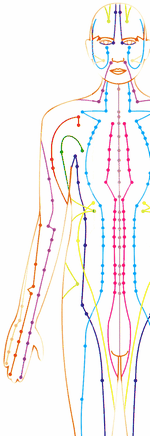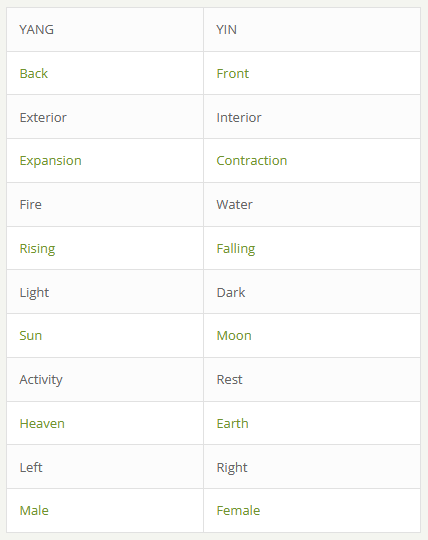What is Traditional Chinese Medicine?
What is Traditional Chinese Medicine?
Traditional Chinese Medicine has a long and rich history. The first and most authoritative text on acupuncture and Chinese Medicine is the Yellow Emperor’s Classic or Huang Di Nei Jing, Basic Questions of Internal Medicine.
The legendary Yellow Emperor was said to have reigned from 2697-2597 B.C. Modern scholarly opinion maintains that the work was written 2000 years later between the Chou and Han dynasties. To this day and throughout history, the Yellow Emperor’s Classic is and has been foundational in the development of theories and applications of Chinese Medicine.
Some of the concepts covered in the classic include, the forces of Yin and Yang, Tao, Theory of the 5 Elements, and application of the above theories to medicine.
Tao, means the method of maintaining harmony between heaven, human and earth. Qi- literally means “the flow of something that is the source of vital energy to humans or animals.”
Inherent in the human body is a meridian system, which is analogous to a river system or electrical circuit. The meridians flow from one end of the body to the opposite end and then return to their place of origin intercepting and communicating with other meridians and organs on their journey.
Qi flows through the meridian system connected to the exterior/interior, upper/lower area of the body. In addition, Qi acts to defend the exterior from outside invasions.
The body is considered to be in a healthy state when the energy can flow in the meridian system unimpeded. When obstructions occur due to invading pathogens such as cold, heat, damp, dry, fire, or wind, or through trauma and emotions, the energy can stagnate and disease results.
Emotions are a natural component of our lives, however when emotions become too intense one way or the other, or linger for an extended period of time, their effect on the balanced system can be detrimental.
The concepts of Yin and Yang are foundational to Chinese medicine and date back to the “Book of Changes” or the “I Ching” written around 700 B.C.
In the I Ching, Yin and Yang correspond to nature’s ebb and flow and are represented by a solid line-Yang, and a broken line-Yin. The combinations of broken and unbroken lines signify all phenomena in nature as represented in states of lesser and greater degrees.
The Chinese character for Yin indicates a shady side of a hill, whereas the character for Yang is indicative of the sunny side of the hill.
In addition, Yang represents day while Yin represents night. In real life this would translate into daytime being associated with activity and nighttime with rest. Further delineations are noted in the Yin/Yang chart.
The Balance of Yin & Yang
Most of us are familiar with the Yin/Yang symbol. You will notice that some aspect of the other is in each half of the symbol; Yin within Yang and Yang within Yin. The two forms are not independent, but are interdependent such that effects felt on one cause effects on the opposite form.
All phenomena in the universe result from the interplay of the two opposing forces of Yin and Yang. The sun rises and sets, day becomes night, warm Spring/Summer days are followed by cooler and darker Fall and Winter months.
Choosing the correct acupuncture points and needling them effectively, may correct the imbalances in the body and modify the disease state. In choosing the appropriate acupuncture points, the practitioner often uses a system of balancing which incorporates the 5 Elements:
The Five Elements: Fire, Earth, Metal, Water, Wood
Each of these elements pertain to certain organs within the body - a yin organ as well as a yang organ.
In total there are 6 ‘solid’ yin organs (Heart, Spleen, Lungs, Kidney, and Pericardium) and 6 ‘hollow’ yang organs (Small Intestine, Stomach, Large Intestine, Urinary Bladder, Gall Bladder, and Triple Energizer).
It is important to remember that when your practitioner states that there is an imbalance in a particular meridian, it does not necessarily mean that Western diagnosis will find that organ to be in a diseased state. Remember, Traditional Chinese Medicine utilizes a system of energetics, which can be difficult to measure under standard medical procedures.
Each of the organs is situated in a particular position symbolized by the circle. The organ preceding any one in the circle is the ‘mother of the ‘son’ that follows. Like a good mother, this organ is responsible for providing nourishment and encouragement for growth to the offspring.
This cycle is called the ‘generating sequence’. Each of these organs should maintain a balance of energy in order for a healthy state to persist. Your practitioner will feel your pulse and observe your tongue and ask pertinent questions to establish the state of the relationship between the organs.
In addition, a cycle called the ‘Controlling Cycle’, is generated across from one element to the next and its job is to keep the organ in check.
At times the response is excessive and this is called ‘Over-Controlling and leads to a situation of disharmony. When the organ being acted upon retaliates, this is called an ‘Insulting Sequence’.
Whereas, the first two sequences – Generating and Controlling are efficacious to a balanced system, the Over-Controlling and Insulting provoke and imbalance in the body.




